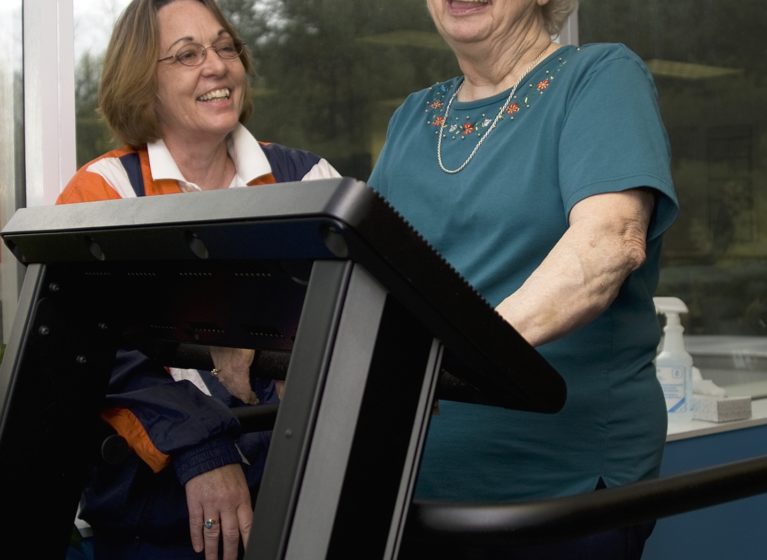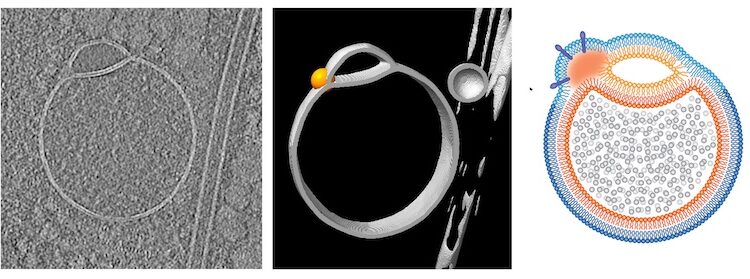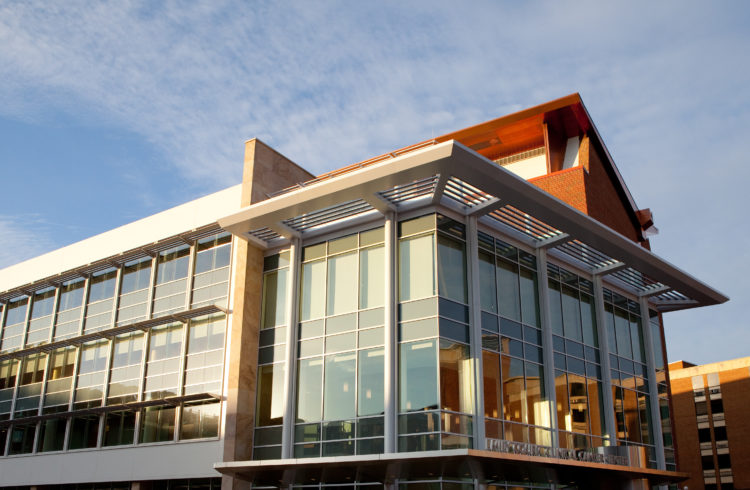
At age 76, Jackie Guild, a survivor of multiple heart attacks and strokes, has a new spring in her step and blush on her cheeks, thanks to the persistence of her daughter and ardent medical advocate, Donna Dellaganna.
Dellaganna credits her mother’s heightened vitality to the outpatient therapy and cardiac rehabilitation programs Guild has been receiving at the University of Virginia Health System.
Guild suffers from chronic stable angina, a condition that causes her to experience nausea and vomiting. Angina is an incurable condition caused by blockages in the coronary artery that prevent sufficient oxygen from reaching the heart. “Most people experience chest pain with angina, but Mom doesn’t. Because her symptoms are different, it took a while for doctors to diagnose her condition,” Dellaganna explains. While use of a sublingual nitroglycerine spray several times a day eased Guild’s symptoms, doctors decided that her medical history and concomitant conditions ruled out use of other conventional treatments to improve her condition.
In the summer of 2008, Dellaganna read a magazine article about a FDA-approved therapy called enhanced external counterpulsation, or EECP, and quickly became convinced that it could help her mother. She asked Guild’s cardiologist about EECP and learned that it is available on an outpatient basis at UVA. At her urging, the cardiologist agreed to write a prescription, which enabled Guild to schedule 35 sessions over a seven-week period, all of which were covered by Medicaid. Ultimately, the doctor was so pleased with her results that he ordered ten additional weekly treatments.
During EECP therapy, patients lie flat on a treatment table and wear inflatable cuffs around their calves, lower thighs and upper thighs. While an electrocardiogram machine monitors the process, a computer inflates and deflates the cuffs in synch with a patient’s heartbeat for 60 minutes. The cuffs inflate during the heart’s resting phase, forcing blood back into the heart and reducing its workload.
“Undergoing EECP therapy is like exercising without moving,” explains Stephen (Mike) Goodman, CNMT, program coordinator of UVA’s EECP Lab. “It increases blood flow and stimulates the growth of new blood vessels in the heart. Research shows that one round (35-sessions) of EECP treatments generally produce benefits that last five to seven years.”
Goodman, who’s worked in UVA’s EECP lab since May 2008, says that all of his patients have reported positive results, including better breathing, more energy, fewer episodes of angina and less need for nitroglycerine. About half of his patients have felt well enough to move to the next level of beneficial therapy – cardiac rehabilitation.
Before reading about EECP, Dellaganna had arranged for her mother to begin cardiac rehabilitation at UVA, only to discover that Guild lacked the strength to do the exercises needed to raise her heart rate to healthy levels. “Mom wears braces on her legs because of her strokes, and these also made it hard for her to use the exercise equipment,” she says.
After completing her initial EECP treatments, Guild felt well enough to return to cardiac rehab, where she made great progress. “The treatments have been so good for mom,” Dellaganna reports. “She is doing great. She’s breathing better and hasn’t had to use her nitroglycerin spray since starting EECP.”
Dellaganna says her main interest in sharing her mother’s story is to get the word out about the benefits of EECP. “It’s widely available, yet not on most people’s radar screens. I truly wish we could get every eligible angina patient on this therapy,” she notes.


